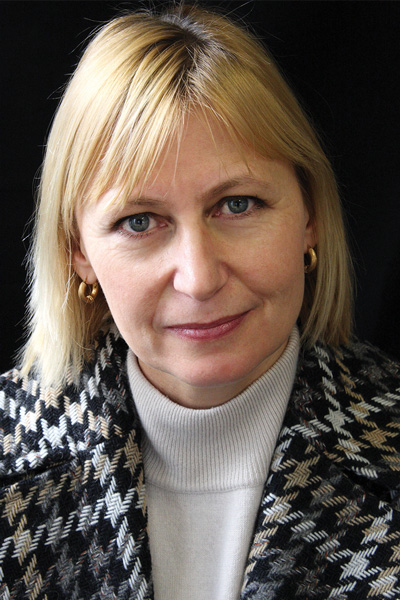This year’s AFA/PFL Life Company of the Year Awards saw Macquarie Life take out all three Client Service Team Awards*. Emily Saint-Smith asked Macquarie Life’s Head of Underwriting and Claims, Dr Sally Phillips, what she believed had led to the clean sweep…
What is Macquarie’s overall service proposition?
Our insurance proposition, as a whole, is ‘we make a difference’. We’re very end-client focused. From an internal cultural perspective, we try to drive home that point on a regular basis: that we are here because of the people that need us at claim time.
We consider both advisers and their customers as our clients. Our approach to servicing advisers is to help them be more efficient, so they can look good in the eyes of their clients.
Breaking down the various areas of service that you’ve been recognised in, what do you believe are the keys to delivering great underwriting services?
Communication. Communication. Communication.
Second to that is ‘choice’.
We’ve got a very high-touch service model in underwriting. Our underwriters are in contact with the adviser throughout that process, particularly if there are amended terms or other changes required. For example, we won’t issue amended terms without having a conversation with the adviser, and discussing it with them.
We recognise that the adviser has done a lot of work to get the application to us. They’ve often spent hours with that client. It wouldn’t be right for us to decline cover without a conversation. We try and do the best we can for the client. We do facultative underwriting – in other words, we go and look for the best terms from our reinsurers before we go back to the adviser. It saves the adviser having to do that.
We also do a lot of tele-underwriting, and we use nurses to carry out the tele-interviews. Some of the application questions are quite invasive. When the client can discuss their medical history with someone with a clinical background, who is empathetic and understands the medical terms, then you tend to get a much better outcome than if they completed the application with their adviser, who is more focused on building a relationship over time.
I understand Macquarie recently reviewed the number of underwriting emails going out each day to the advisers and made changes to simplify that process?
That actually came out of feedback from our advisers. Some advisers want multiple emails a day. For example, an adviser practice might have different administrative staff, so they have multiple emails going to that practice and then split them off to whoever is looking after the case. But some advisers prefer to receive one email with all the case updates listed in one place. Some don’t even want to have emails at all, and in those cases, the underwriter phones the adviser every day to go through the status of all their cases.
We ascertain what service the adviser wants by having the conversation with them upfront. I think it’s one of the reasons we are winning awards for underwriting service, because advisers appreciate that we don’t adopt a one-size-fits-all approach. It’s about looking at efficiency from the adviser end, not from our end.
Each underwriter has a panel of advisers that they look after, so they get to know how their advisers like to run their businesses. We’re now looking at ways to ensure that we capture those preferences, potentially through a technological solution, so if the adviser’s usual underwriter is unavailable, then someone else can pick up those cases and work to that adviser’s preferences.
We see BDMs, underwriting and claims as one team
How do you manage resourcing when you have a dedicated underwriter for each adviser?
We’ve got underwriters in Sydney, Brisbane, and Melbourne who spend significant time in communication with advisers, having the conversations and looking at the more complex cases.
We’re constantly monitoring the case levels coming in. Some underwriters might have a smaller panel, but the advisers on that panel are larger writers, so we make sure that balance is maintained. We do try to match advisers and underwriters by state, because we like our underwriters to go out and visit the advisers as well.
Our underwriters probably spend 80% of their time on the ‘queues’ and 20% on the ‘ground’. For example, an underwriter might take two days out of the office every three months and go and visit their whole panel during that time.
Moving on to the ‘pointy end’ of the service proposition, what differentiates Macquarie’s claims services?
We’ve done the same with our claims assessors as we have with our underwriters; in other words, they’ve got panels, or areas that they look after. So again, our claims assessors can get to know the advisers’ businesses better.
We view claims, like all our service areas, as a partnership between our team and the adviser and their client. Advisers are sometimes worried about claims assessors ‘owning’ the client, or that the insurer needs to be in direct contact with the claimant. We do need to be talking to the client, so what we try to do is build up trust with the adviser, so they are comfortable to allow a company representative direct access to a claimant.
Do you find the vast majority of advisers you deal with get involved in claims?
Yes, the majority of our claims come through advisers, who then allow us to discuss the case directly with the claimants.
Advisers add such value at claim time. They explain product terms to the client, and they help us get the information we need. It’s a scary time for a claimant, and we try to reduce the form filling as much as possible. We try to do a lot of phone based assessment, particularly with ongoing claims. But the adviser can really help, even if it’s just going to the doctor’s office to get the forms completed!
What trends do you see emerging in the servicing of claims?
The underwriting rules engine has been the flavour of the month for the last decade, and we’re now seeing the focus move to the claims end of the service spectrum. Insurers are looking at how they can make claims more automated.
From a Macquarie perspective, the way we look at technology is to identify how it can enable us to deliver service above and beyond the payment. Yes, we can certainly use technology to enhance the claims process, to make it more efficient. But getting the payment out to the claimant is really just a hygiene factor; it’s just your seat at the table. It’s that extra value that you can add to the claimant at a particularly bad time in their life, which is enabled through technology-driven efficiencies, that really sets you apart.
Do you share claims stories with the end client?
We give case studies to our advisers that they can use with their end clients. In our claims flyers we provide statistics advisers can use with clients and some case studies which go through some of the product features.
We’ve also started doing videos, to really try and highlight the fine print of the PDS. That way, the adviser can actually go through the PDS with their client at the get-go, when they take out the policy, and again at claim time, so the client doesn’t have surprises. For example, we talk about what ‘indemnity’ means, with graphics and a detailed explanation. The aim is to get those ‘fine-print’ items out in the open, in ‘bold’, so that the client understands their contract.
Similarly, if the adviser can send the client a video to explain the process they’re abuot to go through, then they have more time to spend with the client on building their relationship.
On the subject of relationships, Business Development Managers are viewed as an integral part of building relationships between advisers and the insurer. How does your BDM team achieve this?
We see BDMs, underwriting and claims as one team. Our BDMs are in constant contact with the underwriters, with the claims administrators; they’re not in silos. We operate as one team, and everyone is focused on making life easier for the adviser, and their end client.
I think BDMs will always have administration tasks to perform on behalf of advisers, but our focus is really on education. For example, our Financial Underwriter and Claims Manager may go out with a BDM to explain what an ‘ongoing income offset clause’ is.
Similarly, most of our BDMs have undertaken an underwriting course, so they understand more about the process. Obviously, we’re not going to employ them as underwriters, but it’s about understanding the world of the underwriter. That way when they’re having a discussion with an underwriter, they can have an informed debate. There’s always going to be different views – that’s natural and that’s healthy – but I think everyone is there for the same end.
Is the BDM role changing so that there is less of a focus on sales and more on addressing communication barriers between insurers and advisers?
Any good BDM goes into an adviser’s business to make the adviser’s business better, and to improve it. It’s really important, therefore, for the BDM to understand the adviser’s business and where they can add value to that. It might be product, but it might also be the way the underwriter’s communicating, or it might be an explanation of a process. Ultimately, it’s about having an understanding of that business and where Macquarie can add value.
Our BDMs actually really care about growing advisers’ businesses and ensuring our service levels are as good as they can be. If they’re driving the back-end teams to get that service level to where it should be, that’s a good thing.
What is the focus for Macquarie’s service teams over the next twelve months?
The proposition for next year is to make sure all our underlying technology is working well, and enhanced and upgraded where required, so it is practical for advisers. We’re looking at all of our processes, all of our communications, and all of our collateral, and making sure that it is presented in a way that an adviser can use with the end client, and that they can understand it.
Technology is one of the things advisers are crying out for, but I think it also comes back to our basic premise of choice. We’re trying to be less internally focused on our processes. We want to give each individual adviser the ability to do business with us the way they want to.
There’s a lot of ‘nice to haves’ around technology. But it’s the basic stuff that actually has to be done first. I think all insurers still have work to do there.
*The Association of Financial Advisers Client Service Team Awards are a new addition to the AFA/Plan for Life Life Company of the Year Awards suite. The three Client Service Team Awards are based on an annual survey of riskinfo’s adviser subscription base, and adviser members of the AFA. Our research partner is the Beddoes Institute

Dr Sally Phillips is the Head of Underwriting and Claims at Macquarie Life.
Contact or follow the author: Website















